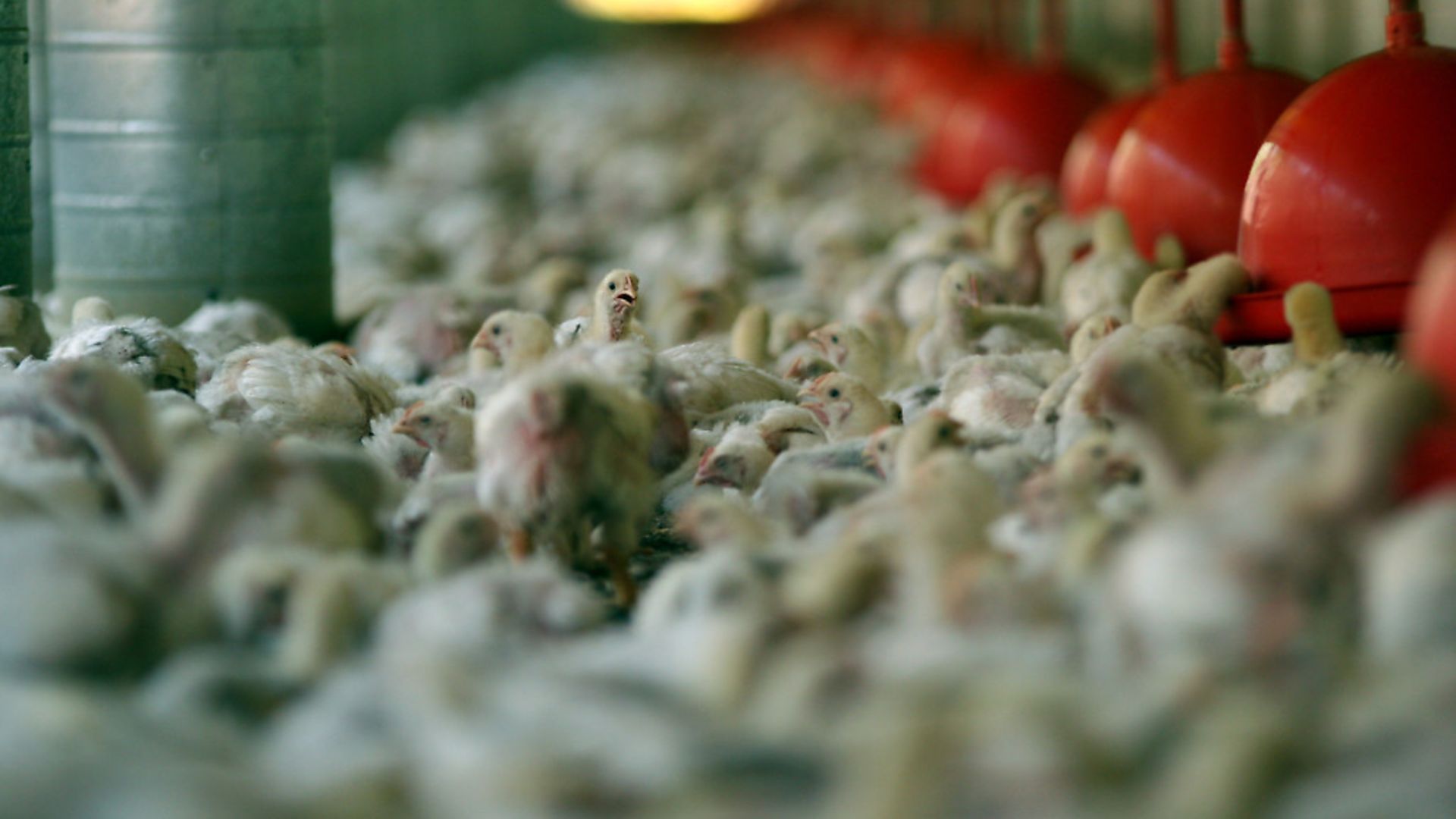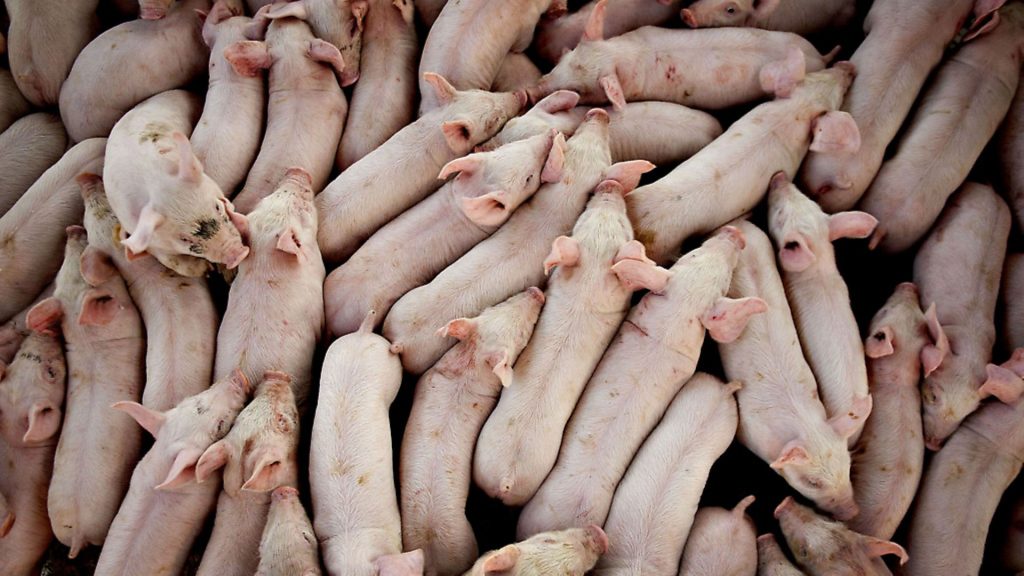
How Britain’s farms are being sold out as real consequences of Brexit come home to roost

Here, finally, is the reality of Brexit, in the flesh.
Ostensibly a debate about the safety of washing food in chlorine (not, intrinsically a health issue according to experts both in the US and the EU) – the row between Liam Fox and Michael Gove over whether or not animal welfare standards will be jeopardised in our quest for a trade deal has exposed the utter lack of control Britan now faces.
Outside the European Union – a body whose regulations and standards we ourselves have played a leading role in developing – all bets are off. Deregulation beckons, and whether we have to eat a dirty chicken expunged of bacteria via a bath in a chlorine solution is the least of it.
This row has profound implications for animal welfare – something Britain has historically taken a lead on since we are, famously, a nation of animal lovers – but also way beyond; to our farmers, our supermarkets and our place in the world as a nation of rapidly declining influence and control.
The row over chlorinated chicken is a sign of things to come – across all sectors of our economy as we grapple with the myriad unintended and complex consequences of that all-too simple question of June 23, 2016.
But first, some facts.
American chicken processors spray or dip carcasses in a solution of aqueous chlorine – the European Union banned this in 1997.
In trying to lay the foundations of a US/UK trade deal Liam Fox vehemently defended the process amid something of an outcry back home. Fox stated there was no risk to human health and it could mean cheaper food on the shelves. Environment Secretary Michael Gove halted the clamour – for now at least – by categorically stating Britain would not be accepting chlorine-washed chicken.
Some were quick to support Fox’s statement that US chicken was safe. Several were adamant that chlorine is added to drinking water or that they regularly swam in chlorine treated swimming pools without ill effect.
Chlorine is not added to drinking water. I suspect people were confusing chlorine with fluoride. The latter chemical is added to help stop tooth decay.
Chlorine is used by the water industry as a disinfectant; for example, after new pipes are laid; but there is a strict limit as to the chlorine content of drinking water. It is 0.5 milligrams per litre; a dilution of one part in two million.
And there are also strict rules on the addition of chlorine salts to swimming pools. These chemicals are toxic and even with the correct dosage are known to cause skin irritations. But Fox was correct to state that the chlorine washing of chicken has no effect on human health. Every food standards authority which has examined the process, including the European Food Safety Authority, has found it to be safe.
The reason the EU bans the importation of American chicken products is not the chlorine wash but the reasons why US producers deem that practice necessary.
The American Society for the Prevention of Cruelty to Animals published a report on the plight of chickens in US factory farms. The report focused on the selective breeding of birds and the need for slower growth rates. It provided documentary evidence of lax animal welfare standards and poor hygiene controls in US agriculture.
The society estimates that 99% of animals bred for meat in the USA live their short lives in large factory farms. The vast majority of these animals never see daylight and are kept indoors under inadequate artificial lighting. The use of rearing cages is common.
ASPCA estimates that broiler chicken often have less that one square foot of space in which to live. That’s roughly the size of an iPad. Most US chickens are slaughtered at six weeks of age. The average age at slaughter in the UK is nine weeks.
To achieve a rate of growth which allows a chicken to be ready for slaughter at six weeks, US farms have selectively bred birds and force feed them. Many birds grow to such a size, they are unable to support their own weight.
The lives of other animals in US factory farms are often equally bleak. Beef cattle are one of the few animals raised outdoors but they no longer roam the plains to be rounded up by Stetson-wearing cowboys.
Beef cattle live fenced into small paddocks and this means they often spend their days standing, or lying, in mud and their own waste. At between six months and one year old, cattle are moved to crowded farrowing sheds where they are fed an unnatural diet of grain heavily laced with growth hormones. The bovine digestive system is designed to eat grass, not grain, and this diet can cause pain, illness and death.
Most dairy cows are kept indoors although some have access to concrete or dirt paddocks. Many are kept in tie-stalls where they are tethered with ropes or chains. An American dairy cow is expected to produce a milk yield of around 100lbs in weight per day, roughly ten times the amount of a decade ago. This yield has been achieved by the heavy use of bovine growth hormone. Three-quarters of downed animals; cattle which cannot stand or support their own weight; are dairy cows. For a cow to produce milk, it must be pregnant or rearing a calf.
Male dairy calves in the US are reared for veal. Although animal welfare groups and the American Veterinary Medical Association have had some success in relation to the care of veal calves, many are still kept in crates. The crates restrict a calf’s movement to prevent muscle development. This is believed to make the meat tender. The EU banned the use of veal crates in 2007.
The US pork industry also uses factory farming techniques. In many states, pigs are kept indoors, in cramped pens. The wooden slats and concrete floors of these pens prevent natural behaviour such as rooting. Pigs are probably the most intelligent farm animal. The cramped conditions in factory farm sheds often leads to irritability and tail-biting. To stop this pigs tails and teeth are often removed without pain relief.
Sows are artificially inseminated and live a life which is an endless cycle of pregnancy and giving birth. Piglets are removed from their mothers at around three weeks of age. Sows spend their pregnancy in gestation cages. When ready to give birth, they are moved to equally restrictive farrowing cages. Immediately after the removal of her piglets, a sow will be taken back to the gestation cage and re-inseminated.
Salmonella and e-coli are endemic in US factory farms. As a result, there is widespread and excessive use of antibiotics to keep disease outbreaks at bay. There are concerns that the extensive use of antibiotics may lead to an increase of antibiotic resistance and the evolution of resistant ‘superbugs’.
It isn’t just the animals which suffer as a result of large scale factory farming in the US. Farm workers and those living near farms face significant health dangers.
Many farm workers in America suffer from respiratory diseases such as bird-breeder’s lung (Pneumonitis or HP). This disease comes from working in an environment filled with the dust from bird droppings and heavy with chemicals such as ammonia. Staphylococcus infections which cause gastro-intestinal ailments and skin complaints are endemic among American agricultural workers.
American factory farms also have a real problem with animal waste. Some have tried to sell it off as fertiliser but supply massively exceeds demand. Most factory farms are surrounded by effluent settlement lakes. Put bluntly living near a US factory farm stinks.
In 1993, in Milwaukee, there was a major Cryptosporidium outbreak which killed 1,000 and caused 400,000 illnesses. The cause of the outbreak was traced to untreated animal waste from factory farms. It had seeped into the state’s water supply.
The British Poultry Council, has stated that allowing imports of chlorine-washed chicken into the UK post-Brexit, ‘undermines higher food safety and animal welfare standards’. It calls such imports a betrayal of British farmers and argues that the UK poultry sector is the most able part of our agricultural economy to scale up production and to become self-sufficient.
Food in America may be cheap compared to the UK but there is a significant price to pay – both for farmers, who will find their current businesses built on the welfare standards we ourselves have promoted, undermined by cheaper meat from the States – and of course for us the consumers, faced with confusion over what it is exactly we are putting into our mouths – from brutalised chlorine-washed chickens to GM crops. This is a future we should all find unpalatable.









